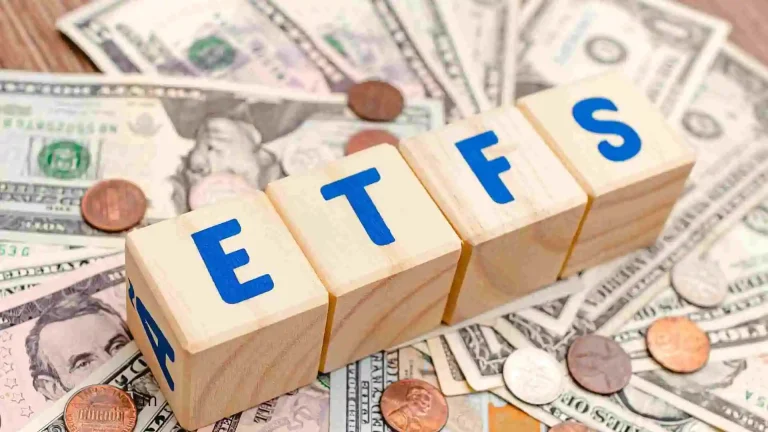Dollar Cost Averaging for Investing is a reliable approach, especially for those new to the complex world of stocks and investment strategies. Investing can be challenging, particularly for beginners trying to navigate these complexities. A popular method gaining traction among investors is dollar-cost averaging. This strategy involves investing a fixed dollar amount at regular intervals, regardless of share price. By doing so, investors can capitalize on market fluctuations, potentially lowering their average cost per share over time.

How Does Dollar Cost Averaging Work?
By using the dollar cost averaging for investing, investors commit to investing the same dollar amount consistently, whether prices are low or high. This strategy helps mitigate the risk of trying to time the market, as it focuses on the long-term accumulation of shares rather than making decisions based on short-term market movements. By investing at regular intervals, investors end up buying more shares when prices are low and fewer shares when prices are high, leading to a lower average cost per share over time.
Overview of Dollar Cost Averaging
When it comes to investing, the strategy of dollar cost averaging for investing is a popular choice among investors looking to navigate the unpredictable world of stocks. This method involves consistently investing a fixed dollar amount at regular intervals, regardless of the fluctuations in share prices. By adopting this approach, investors are able to capitalize on market ups and downs, potentially reducing their average cost per share over time.
Dollar Cost Averaging method
Using the dollar-cost averaging method means committing to investing a set amount of money consistently, irrespective of whether the stock prices are high or low. This strategy minimizes the risk associated with trying to time the market and instead focuses on steadily accumulating shares for the long term. By investing at regular intervals, investors purchase more shares when prices are lower and fewer when prices are higher, ultimately leading to a decrease in the average cost per share over time.
Benefits of Dollar Cost Averaging

Dollar-cost averaging is a strategy that can help investors avoid the temptation of trying to predict market movements. It allows for disciplined and regular investing, reducing the impact of market volatility on the overall investment. This approach also removes the need to make lump sum investments, spreading the investment over time and potentially benefiting from the average price over the long term.
Cons of Dollar-Cost Averaging
While dollar-cost averaging can help mitigate risk and provide a consistent investment plan, it may also lead to missed opportunities in scenarios where the market experiences significant growth within a short period. Additionally, adhering strictly to this strategy may result in a slower accumulation of wealth compared to lump sum investing when the market is performing exceptionally well.
Implementing Dollar Cost Averaging for Investing

Using Dollar Cost Averaging for Investing
Investors looking to benefit from market fluctuations and reduce the impact of volatility often turn to dollar-cost averaging as a strategic investment approach. By committing to investing a fixed dollar amount at regular intervals, regardless of share prices, individuals can achieve a more disciplined and consistent investment plan. This method ensures that investors are not overly affected by short-term market movements and instead focus on the long-term accumulation of shares. Through the practice of dollar-cost averaging, investors can leverage the concept of buying more shares when prices are low and fewer when prices are high, resulting in an overall lower average cost per share over time.
How Dollar Cost Averaging Helps Investors
One primary advantage of dollar cost averaging for investing is that it allows investors to avoid the pitfalls of trying to time the market accurately. By consistently investing a set amount of money at regular intervals, investors create a systematic approach to building their investment portfolio. This strategy also eliminates the need for making lump sum investments, which can be risky, especially during periods of market volatility. Dollar-cost averaging provides a sense of discipline and structure to investing, ensuring that investors stay focused on long-term wealth accumulation rather than short-term market fluctuations.
Lump Sum vs. Dollar Cost Averaging
When comparing lump sum investing to dollar-cost averaging, it’s essential to consider the risk and reward trade-offs of each approach. While lump sum investing can yield significant gains in a rapidly growing market, it also exposes investors to the risk of substantial losses during market downturns. On the other hand, dollar-cost averaging offers a more balanced and conservative strategy, spreading out investments over time to mitigate risk and potentially lower the average cost per share. Ultimately, the choice between lump sum and dollar-cost averaging depends on an individual’s risk tolerance, investment goals, and market outlook.
Understanding the Risks and Rewards

Market Timing and Dollar-Cost Averaging
Market Timing and Dollar-Cost Averaging are two distinct investment strategies. Market Timing involves making investment decisions based on predictions of future market movements, which can be risky and challenging to execute successfully. On the other hand, Dollar-Cost Averaging (DCA) is a more systematic approach where an investor consistently invests a fixed amount at regular intervals, regardless of the market’s current state. DCA helps mitigate the risk of poor market timing and smooths out the effects of market volatility over time .
How Dollar Cost Averaging Works in Volatile Markets
Using the dollar cost averaging for investing means committing to investing a set amount of money consistently, irrespective of whether the stock prices are high or low. This strategy minimizes the risk associated with trying to time the market and instead focuses on steadily accumulating shares for the long term. By investing at regular intervals, investors purchase more shares when prices are lower and fewer when prices are higher, ultimately leading to a decrease in the average cost per share over time.
Conclusion
Using dollar cost averaging for investing is a strategy that can help investors avoid the temptation of trying to predict market movements. It allows for disciplined and regular investing, reducing the impact of market volatility on the overall investment. This approach also removes the need to make lump sum investments, spreading the investment over time and potentially benefiting from the average price over the long term.






